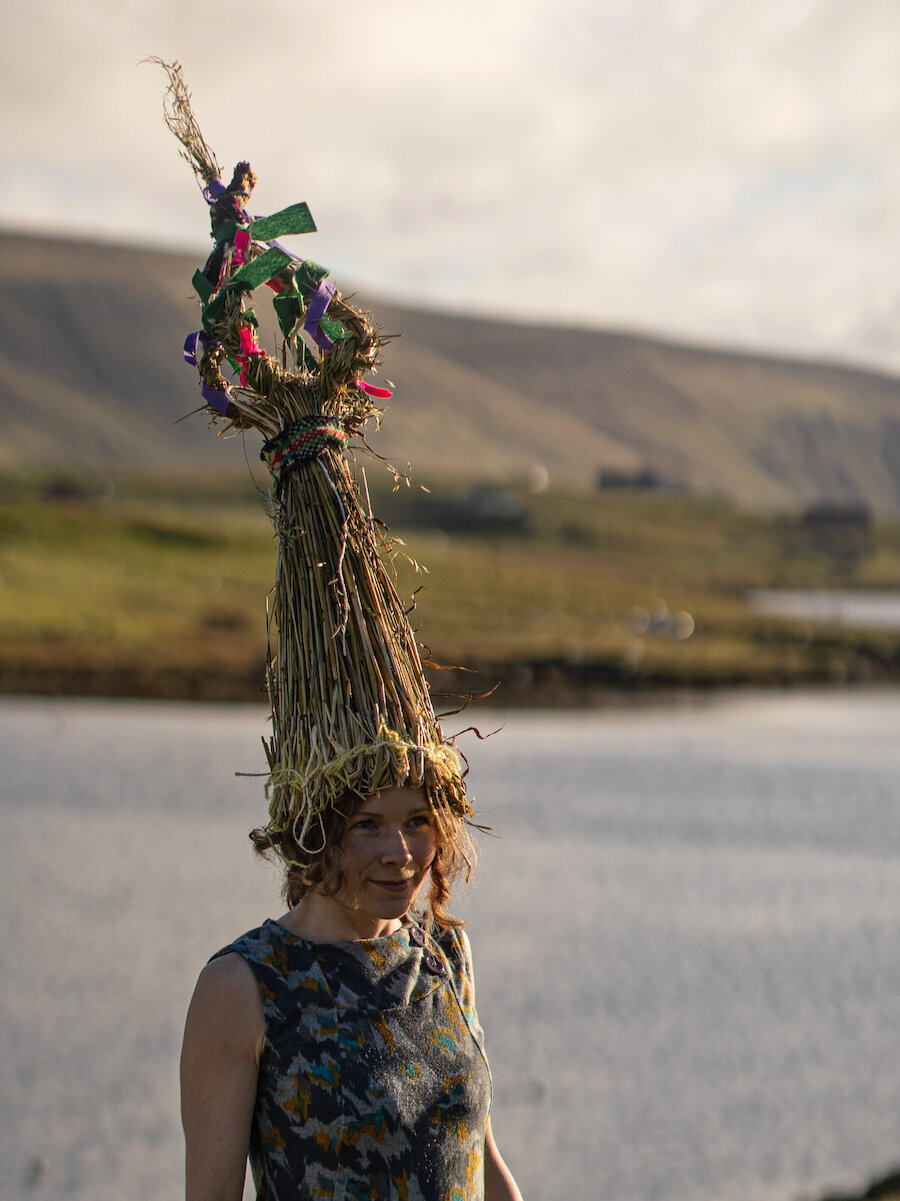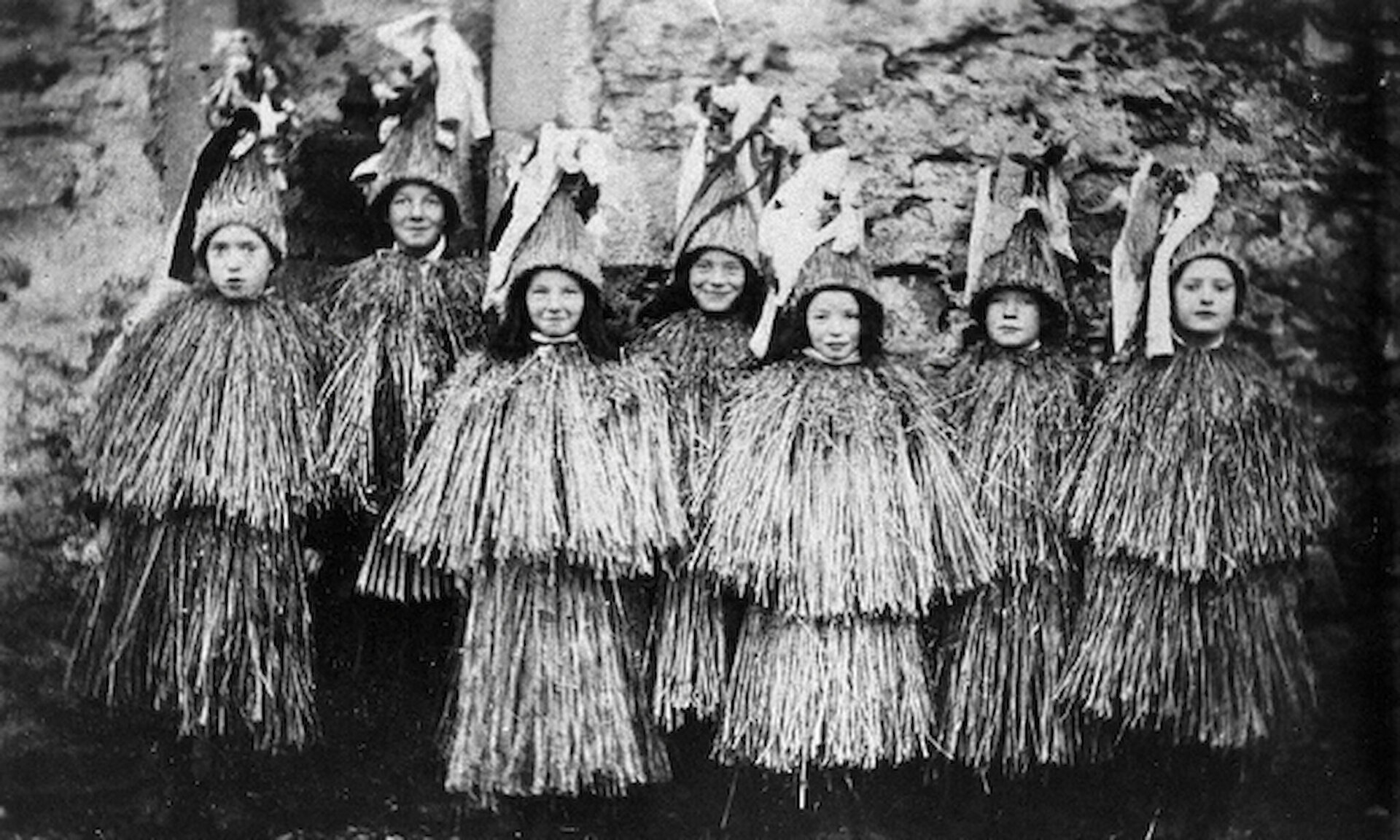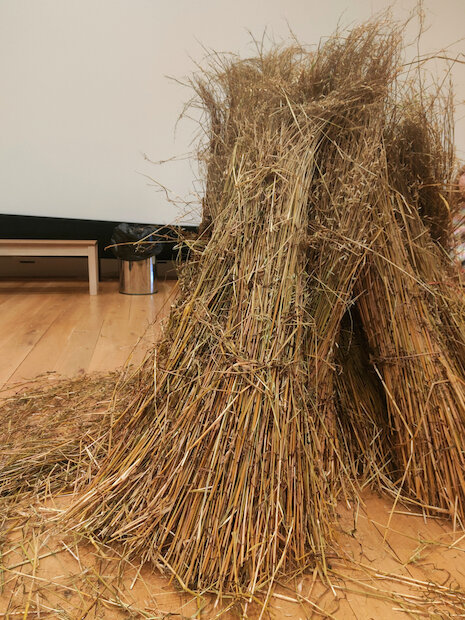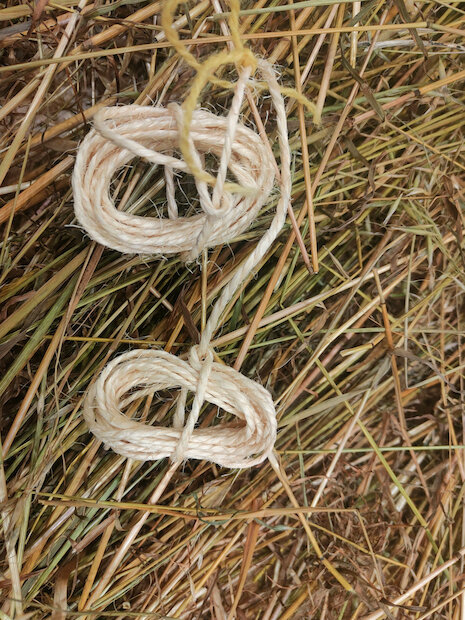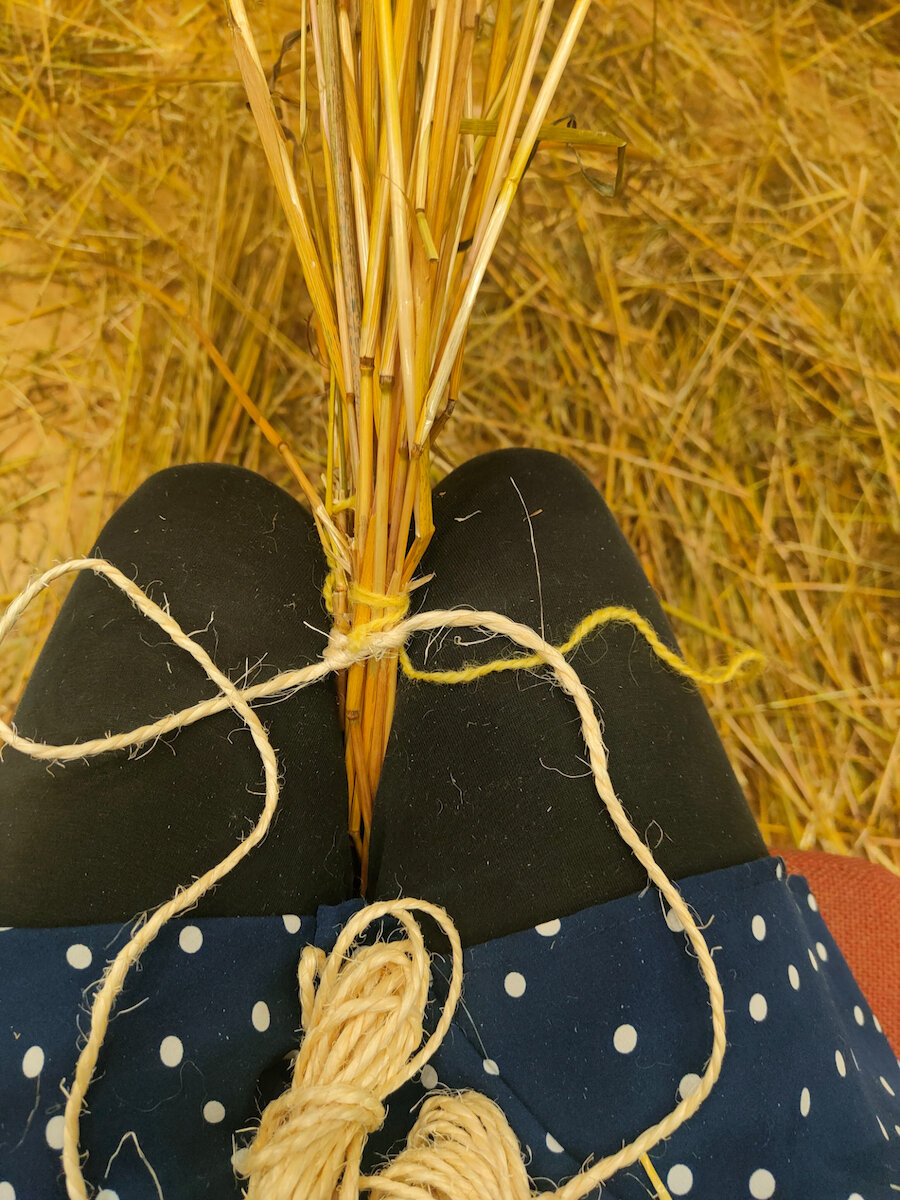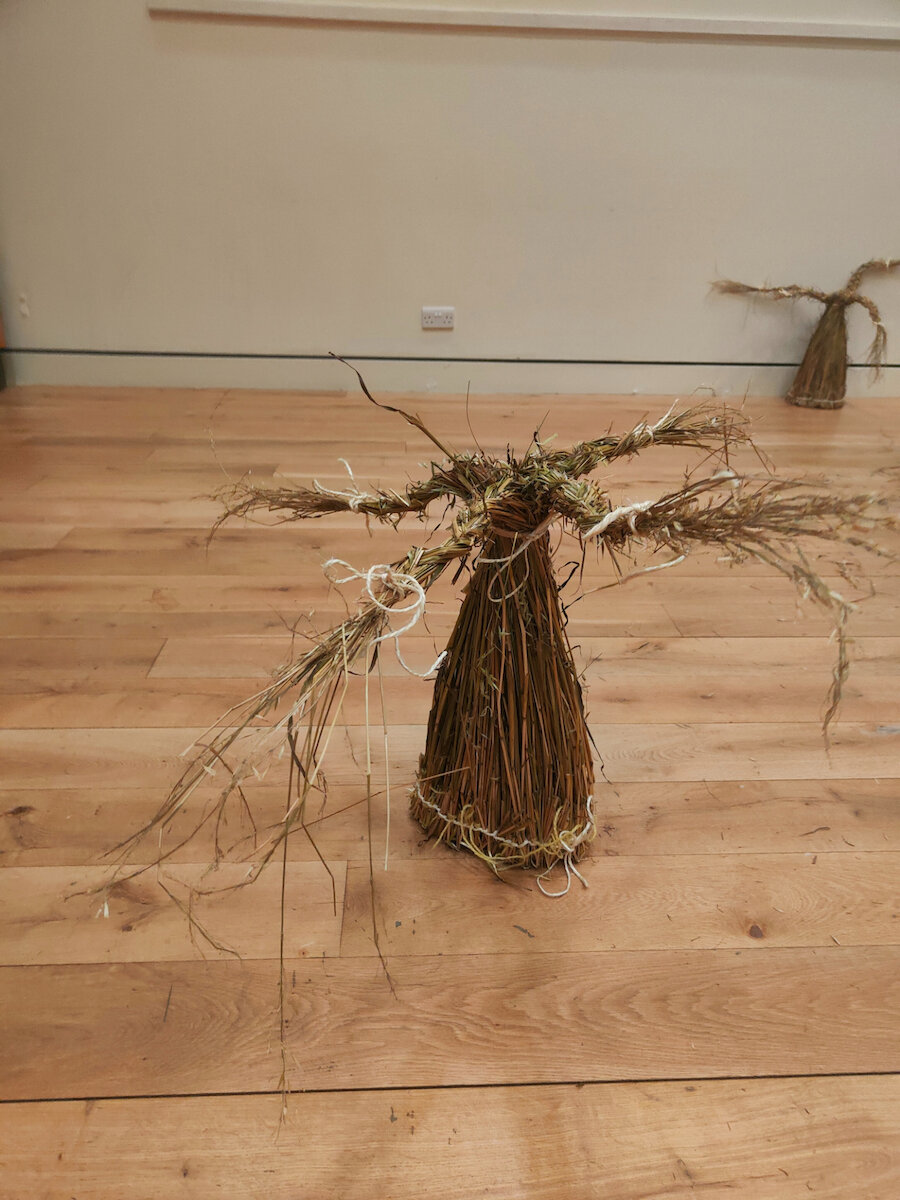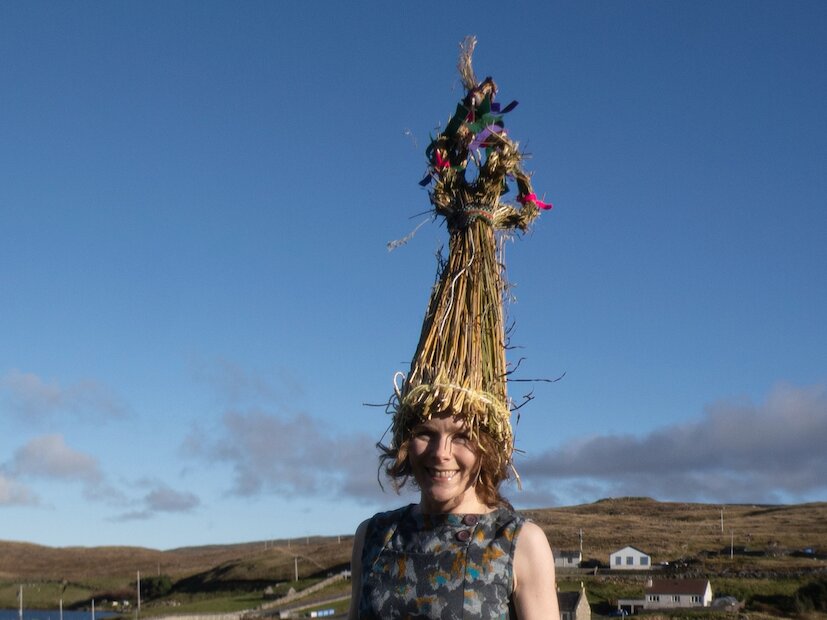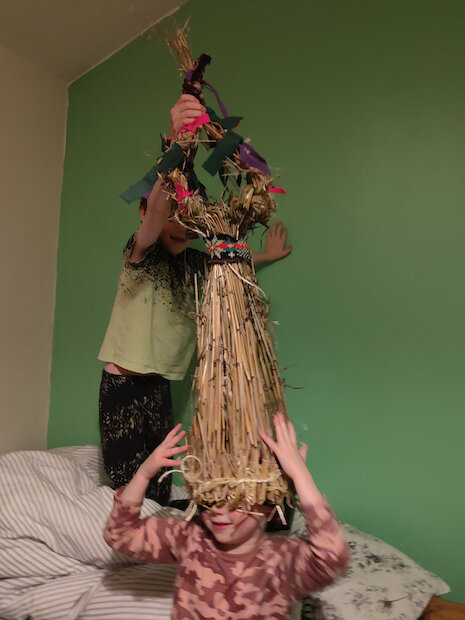A week before Hallowe'en, eight of us gathered at Shetland Museum and Archives and sat in a circle around a large pile of straw. Outside was bright sunshine but the wind, and weather forecast, carried stories of impending storms. We were all gathered here for the same purpose. To make a skekler hat.
Before embarking on this task we went to view the museum’s skekler display and learned the history of this costume and its role in Shetland culture. In Scottish Hallowe'en tradition the figure of the guiser is common. People wearing costumes to disguise their identity would visit houses, putting on a performance in exchange for food or money. This tradition of guising has more recently merged with American traditions of trick or treat.
Guising was also a common part of Shetland culture but had its own distinct practices. The most visible being the figure of the skekler.
